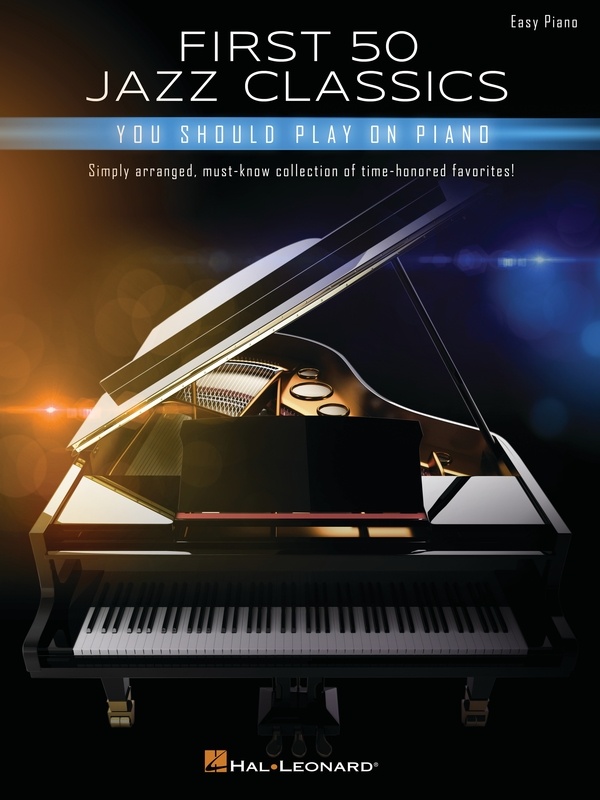

Blues Piano A-Z by Jeremy Siskind
Many contemporary Western music genres such as jazz, soul, and rock can be traced back to blues, which makes this an important genre to study. However, if the thought of teaching the blues terrifies you, this book could be the answer.
There are 26 pieces that gradually take you and your students through different elements of blues music like the 12-bar blues, improvisation, seventh chords, syncopation and walking bass lines.
Each piece is first introduced with background that covers the history of the style, great musicians or bands, and famous song examples. There is also mention of videos you could watch online with your students.
The earlier pieces in the book could be suitable for challenging AMEB Grade 2-3 students, and incorporating some rote learning into the lesson. While towards the end, the pieces progress to an AMEB Grade 6-7 level. Keep in mind that students will need a hand span large enough to comfortably reach sevenths.

First 50 Jazz Classics You Should Play on Piano
This is a great selection of jazz piano and song arrangements for piano. The collection draws from famous jazz musicians (the likes of Miles Davis and Thelonious Monk), jazz film scores, jazz standards, and Broadway musicals.
For a bit of trivia in your lesson, you could talk about the still running New York Birdland jazz club, or the Savoy Ballroom, which is commemorated with a plaque on Lenox Avenue in Harlem, New York City.
A reading workout with plenty of accidentals is awaiting AMEB Grade 4 students. However, there are some pieces with repeated patterns which could be introduced to Grade 2-3 students, possibly taught as quasi-rote pieces.
Notationally hand stretches of 6ths and 7ths are needed. If the student has a small hand, then you could substitute based on the chords written above the stave. As is typical of the genre, lots of exposure to syncopation and swing, with some early contrapuntal learning opportunities thrown into the mix.

Boogie Woogie arr. Brent Edstrom
This book is part of the jazz piano series. It is for advanced pianists AMEB Grade 6-8,
especially those who have played jazz in earlier grades and want to focus on boogie woogie.
Intermediate to advanced pianists will be challenged by the complex rhythms, broken chords, walking bass, and steady chordal accompaniments. These pieces demand wrist flexibility and an octave hand span, to comfortably play continuous octaves and broken octaves. The clear typeset makes it easier to see how the rhythms in both hands fit together. Additionally, blues notes have been notated as grace notes and tempos vary from moderate to fast.

Coffee Table Jazz arr. Brent Edstrom
This is another book that is part of the jazz piano series. Think piano music in a hotel lobby. There are beautiful open jazz voicings, and if strictly following what is written, the student would need a reach of at least an octave. However, for students with small hands, enlisting the help of the pedal will be useful, and the teacher could suggest alternatives based on the chords written above the staff.
Complex chords beyond sevenths, up to thirteenths will make for thought-provoking discussions about how alterations add more colour, and how the harmony differs from earlier genres. Tempos range from ballad to free to moderate.

Ashley Cao-Nguyen
Ashley is a piano teacher and healthcare storyteller from Sydney. She is passionate about collecting musical stories, using them to make her lessons memorable, and as a simple way for parents to create a music-filled home environment. Her special interest is in performing arts healthcare and teaching injury-preventative piano technique.
Website: https://musicstoryphiles.com/
LinkedIn: https://www.linkedin.com/in/ashley-cao-nguyen-1233523b/











